Quiet Spaces

There are two kinds of quiet in Lebanon. There is silence of those gone, disappeared, assassinated, remembered in images large and small peppered across the city, in empty buildings that stand like ancient ruins, rubble and echoes of beauty reminiscent of ancient civilizations. But these buildings are not remnants of a distant past, they have not been eroded by the passing of time or weathered by nature, they have been ravaged by the same generations of people still walking the streets today.
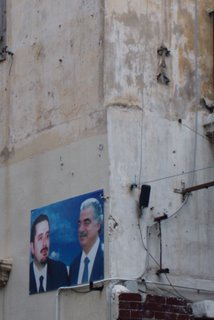
Remains of one of the churches on the 'wrong' side of the green line, which is just off the main road leading into downtown. The so-called green line was the unofficial boundary splitting the city into the mostly Muslim West Beirut and the mostly Christian East. Most of the buildings along the line were destroyed during the war (1975-1990) and while many of them have been rebuilt or remodeled, there is still much more to be done.
History lesson for those interested -- The civil war erupted in 1975. April 13, 1975, according to most historians. On that day, a group of Christian Phalangist militiamen ambushed a bus carrying Palestinians, killing 26 people and sparking a civil war that enveloped the city and spread to touch almost all corners of the country. (If you want to see an interesting movie about this incident and the onset of the war, there is a film called West Beirut) But it would be inaccurate and overly simplistic to assume that this conflict is based solely in the clash of Muslims and Christians. In fact, the city and country fractured into strong factions of Sunnis, Shiites, Druze, Palestinians, Maronites and those are only the main groups. Many Lebanese fled the city and as the war dragged on even more headed abroad. In 1982, Israel invaded Lebanon in pursuit of PLO leaders operating out of Beirut, adding to the fighting and destruction of the city. And yet today, the shops and property along the former green line are some of the most ritzy and expensive places to be found. (P.S. There are obviuosly a million other aspects and events of the regional history but those were just the facts I decided to toss out for the moment, please don't take it as complete or any statement about what the most important events were, this was just a last-minute rant to contextualize some of the pictures :-)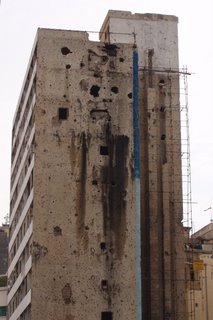
 A large banner depicting assassinated former PM Rafik Hariri, hanging from one of the remodeled buildings. The mosque peeking above the shelled building was a project initiated by Hariri as part of the revitalization of downtown.
A large banner depicting assassinated former PM Rafik Hariri, hanging from one of the remodeled buildings. The mosque peeking above the shelled building was a project initiated by Hariri as part of the revitalization of downtown.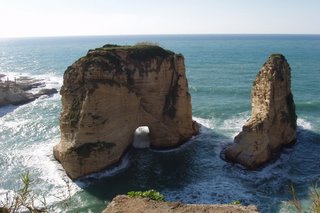
The second quiet in Beirut is the elegant and soothing beauty of the Mediterranean, with its turquoise waters crashing against the stones. I sat for two hours, taking in the calming repetition of waves along the coast, where young couples come to escape the confines of society, children come to play, families to picnic, some men to fish and everyone to absorb some of the tranquility offered by the sea. (Or to pick up foreign women, which was the only disturbance of my afternoon…) What started as a nice friendly conversation, which I was happy to have and to practice my Arabic, since I've barely used it at all since I got here, dragged on into one of my all-too-frequent conversations about my work, my family and my imaginary husband. I then tried to go back to my writing. None of which, apparently, was enough of a deterrent since he then tried to move closer to me and hold my hand. A swift mish mounasib (not appropriate) comment got the point across more directly and I was finally left to enjoy the day for myself. I just do NOT understand social interactions in this part of the world. Friendly just does not seem to be an option. (Or maybe this is just the result of the fact that I look Russian, and in this region that means I may be a 'working girl'.)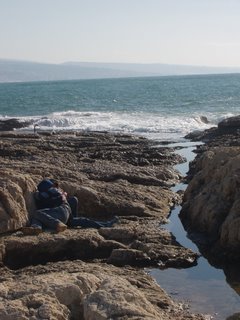
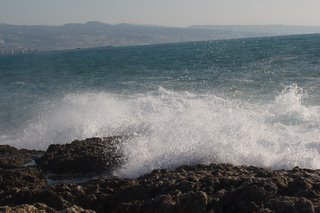


0 Comments:
Post a Comment
<< Home